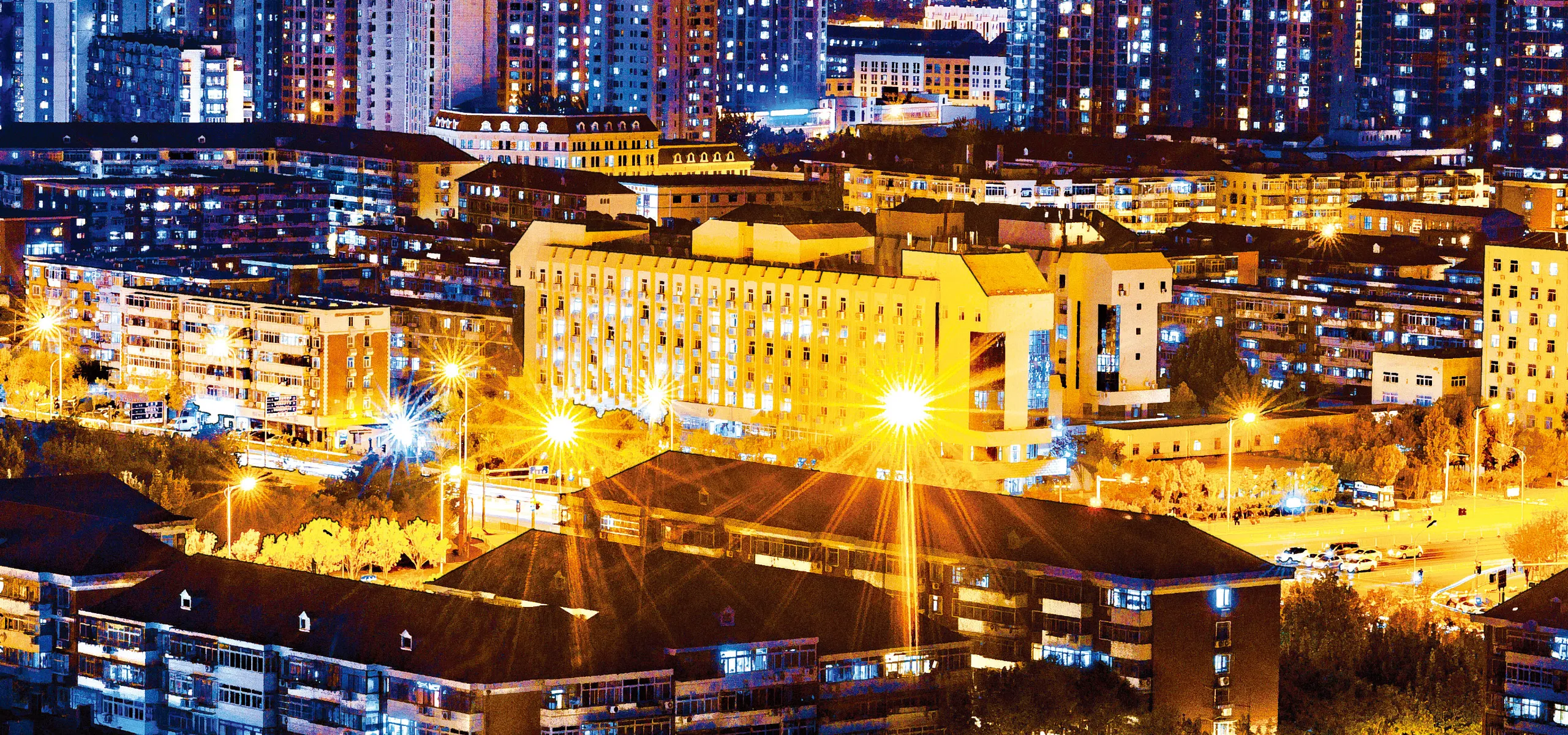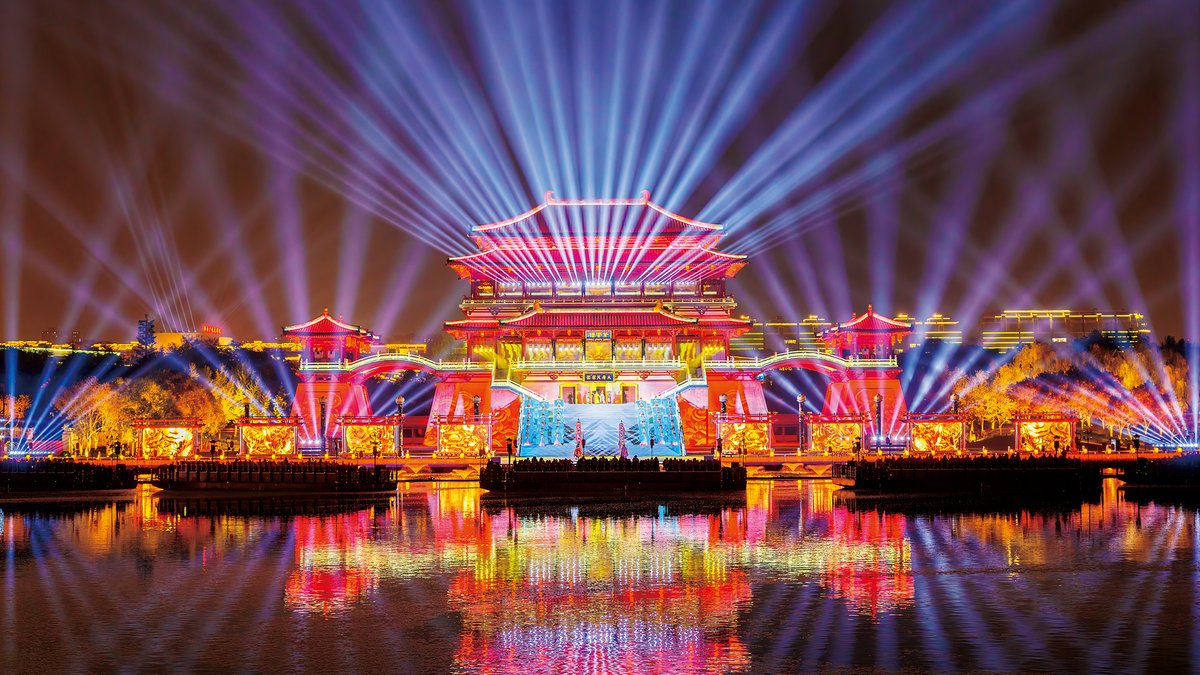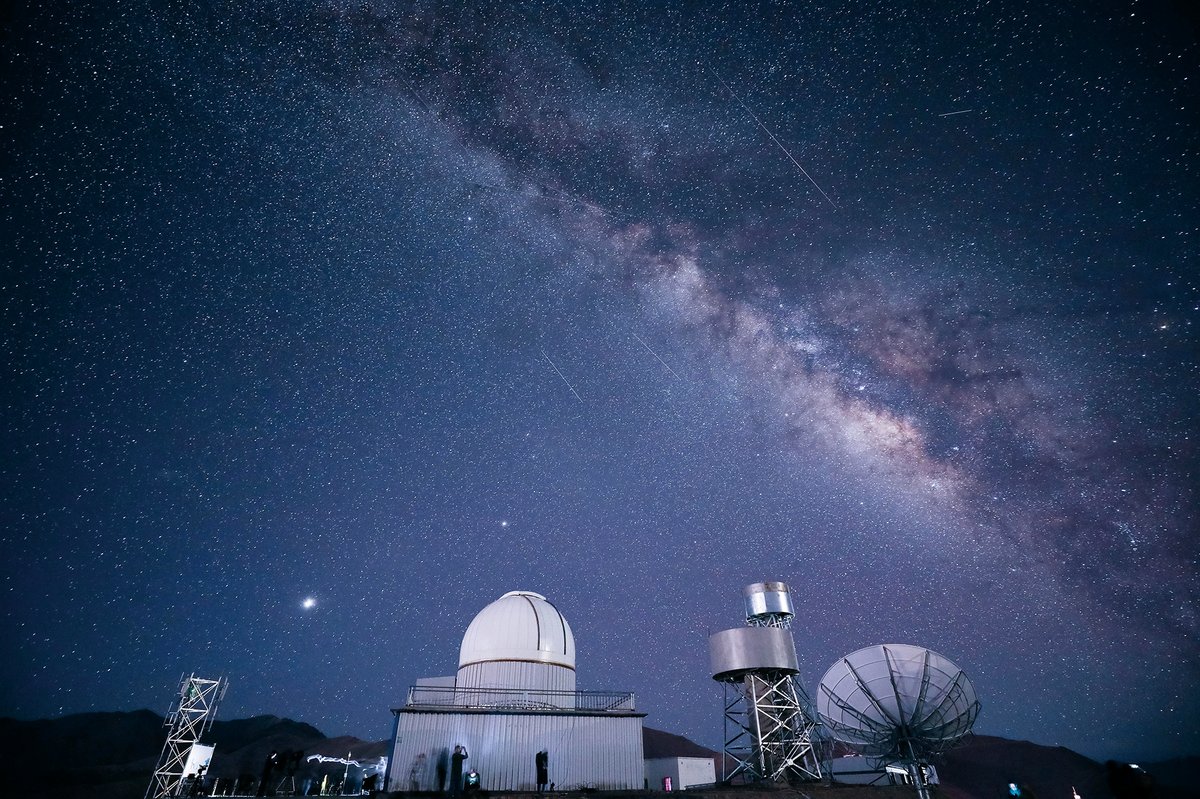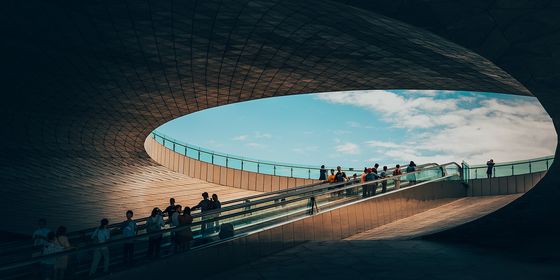China is increasingly trying to tackle light pollution, a side effect of urbanization with severe consequences for human health and the ecosystem
When a record-breaking heatwave hit the majority of China this past summer, Shanghai finally decided to shut off the lights. The usually glowing metropolis hit the off switch on decorative lights, LED billboards, and light shows along its famous Bund waterfront area on August 22 and 23, to save electricity in the face of hydropower shortages and overloaded grids across the country.
“Currently in Shanghai, the [night] sky in the [city’s central] Xuhui district is 25 times brighter than in Nanhuizui Guanhai Park [in the suburbs],” says Liu Chengze, assistant professor of astronomy at Shanghai Jiaotong University. Back in 2020, Liu and his students found that the brightness of Shanghai’s sky, as measured at the Sheshan branch of the Shanghai Astronomical Observatory (SHAO), had increased 100 times in the past 20 years. This so severely influenced the operations of SHAO’s 1.5-meter optical telescope, once the biggest telescope in East Asia, that it was taken out of operation in 2015, with plans to move it further away from the downtown area in order to better observe the night sky.
But it’s not just an inconvenience to astronomers: Light pollution is tied to major impacts on wildlife, energy waste, and human health risks, in particular circadian rhythms and melatonin production.
Like water or air pollution, light pollution, another side effect of industrialization, has become one of China’s greatest environmental challenges. Light pollution is universally defined as inappropriate or excessive artificial lighting, which come from sources such as exterior and interior lighting in buildings, advertisements, offices, factories, streetlights, and illuminated sporting venues, according to the NGO International Dark Sky Association. In China, there are three common categories of light pollution: white light pollution caused by the reflection on building surfaces in the daytime; skyglow caused by electrical illumination at night; and color light pollution caused by colored light sources.
It’s not just big eastern coastal cities like Shanghai causing problems. China in general has seen an increase in light-polluted regions in the past two decades due to rapid urbanization. According to a 2016 paper in the American Association for the Advancement of Science’s Science Advances journal, about 65 percent of Chinese people experience light-polluted nights and 33 percent cannot see the Milky Way. Although worldwide, Europe and North America are more proportionately affected, with more than 99 percent of their populations living under light-polluted skies, China has the largest total number of people experiencing light pollution.
To local governments across China, dazzling lights symbolize prosperity and advancement, says Xu Leiqing, professor at Tongji University’s College of Architecture and Urban Planning. In addition to industrial, commercial, and residential light, many cities have invested in decorative light shows illuminating their streets and skyscrapers facades at night. “They see [light shows] as an investment, which could attract more people and more investment,” Xu tells TWOC, adding that local governments often use excessive lighting to show their cities are safe, beautiful, and economically advanced.
In 2018, light shows in Shenzhen attracted about 1.12 million people over the span of nine days, according to the Chinese media outlet Huxiu. The ancient city of Xi’an holds regular lighting ceremonies at its major tourist sites. And in Chengdu, the Tianfu New Area’s twin IFC towers double as giant video screens at night, attracting crowds of onlookers.
Xu, however, points out that such nightly light shows are unsustainable, both when it comes to cities’ financial budgets and the effects of light pollution on people’s health, wildlife, and the environment. He observes that in 2019, the Shanghai government invested 90 million yuan in illuminating the Baiyulan Plaza, the tallest building of the Puxi area west of the Huangpu River. “If there are 20 [such] buildings, you need to invest about a billion yuan just for the illumination projects,” without counting other electrical consumption, says Xu, “and there are far more than 20 buildings along the Huangpu River.”
According to the Chinese Lighting Association, lighting made up 20 percent of overall electricity consumption in China in 2019. Xu Haiwen (no relation to Professor Xu), head of the Lighting Environment Management Center in Shenzhen, posited in an interview with Huxiu media in 2021, that if the city turned off the illumination of decorative lights for half an hour, it could save 23,000 kilowatt-hours of electricity. This is especially noteworthy as other regions, such as northeastern and southwestern China, have experienced electrical shortages in recent years.
Excessive artificial light at night can disrupt humans’ biological cycles, and has been linked to numerous health problems. According to the World Health Organization (WHO), about 600 million Chinese people are diagnosed with short-sightedness, and the state-owned news website People.cn once quoted several ophthalmologists as saying that the major reason why the 60 percent of Chinese high school students were short-sighted was because their visual environment was polluted and caused damage to their corneas and irises. A study published this year, led by Dr. Yu Xu at the Shanghai Institute of Endocrine and Metabolic Diseases discovered artificial light at night can be a risk factor for diabetes. Researchers around the world have also discovered excessive exposure to light at night can lead to cancer and heart disease.
Artificial light also disrupts the biological rhythms of wildlife, affecting reproduction, nourishment, sleep, and self-defense, and can have a ripple effect on the entire ecosystem. A common estimate states that a small back-lit advertising box kills about 350,000 insects per year. In September 2020, Lanshan county in Hunan province found that the street lights in the county’s main square attracted over 10,000 egrets on their migratory route, causing many to lose their sense of direction and die from collisions with buildings and other objects. In 2021, researchers from Duke Kunshan University in Jiangsu province found that artificial light causing a loss of direction was one of the main reasons that birds crashed into buildings, the second biggest contributing factor to bird deaths worldwide. Though China lacks national statistics on bird crashes, the country is on one of the world’s three major migratory routes.
China is waking up to the problem. In 2019, the central government announced that it would rectify excessive “landscape brightening projects,” “vanity projects,” and “image projects,” condemning local governments for wasting money and social resources. In 2021, delegate Li Dajin at the National Congress, China’s highest legislature, proposed to introduce nationwide laws on light pollution. And this August, Shanghai became the first city in China to legislate against light pollution and punish violators, who could be fined up to 50,000 yuan for a first offense.
One year after discovering its egret issue, Lanshan county began a “black-out” plan, shutting down over 2,500 street lights after 9 p.m. during migratory season; authorities also encouraged shops to turn off outdoor neon signs and spotlights. In 2016, China built its first “dark sky reserve” on the Tibetan Plateau, a 2,500-square kilometer expanse with a special area designated for celestial observation. The same year, the city of Zhangzhou in Fujian province also built a “dark park,” open to the public for night sky observation, and several other cities followed.
Yet these measures are just a drop in the ocean. Liu believes that policies and public complaints are not enough to make fundamental improvements as the issue of light pollution is still not being taken seriously, neither in China nor internationally. He calls for more education via the media on the issue. “If you want to look up at the sky and see the stars, you need to prevent light pollution now,” he warns. “Otherwise, you won’t be able to see the stars anywhere after several decades of development.”
Lights Off: China Finally Takes Action on Light Pollution is a story from our issue, “Promised Land.” To read the entire issue, become a subscriber and receive the full magazine.














